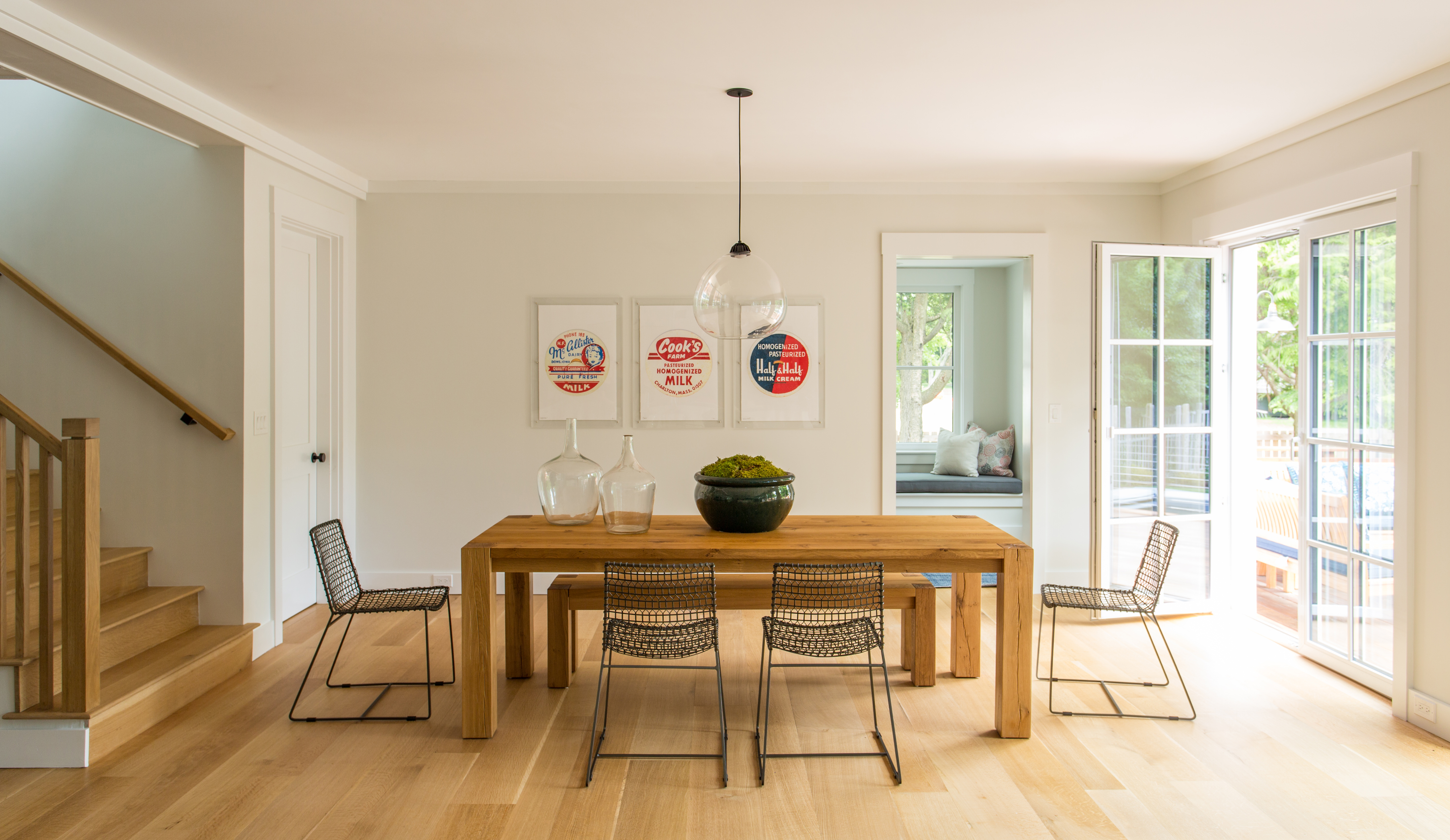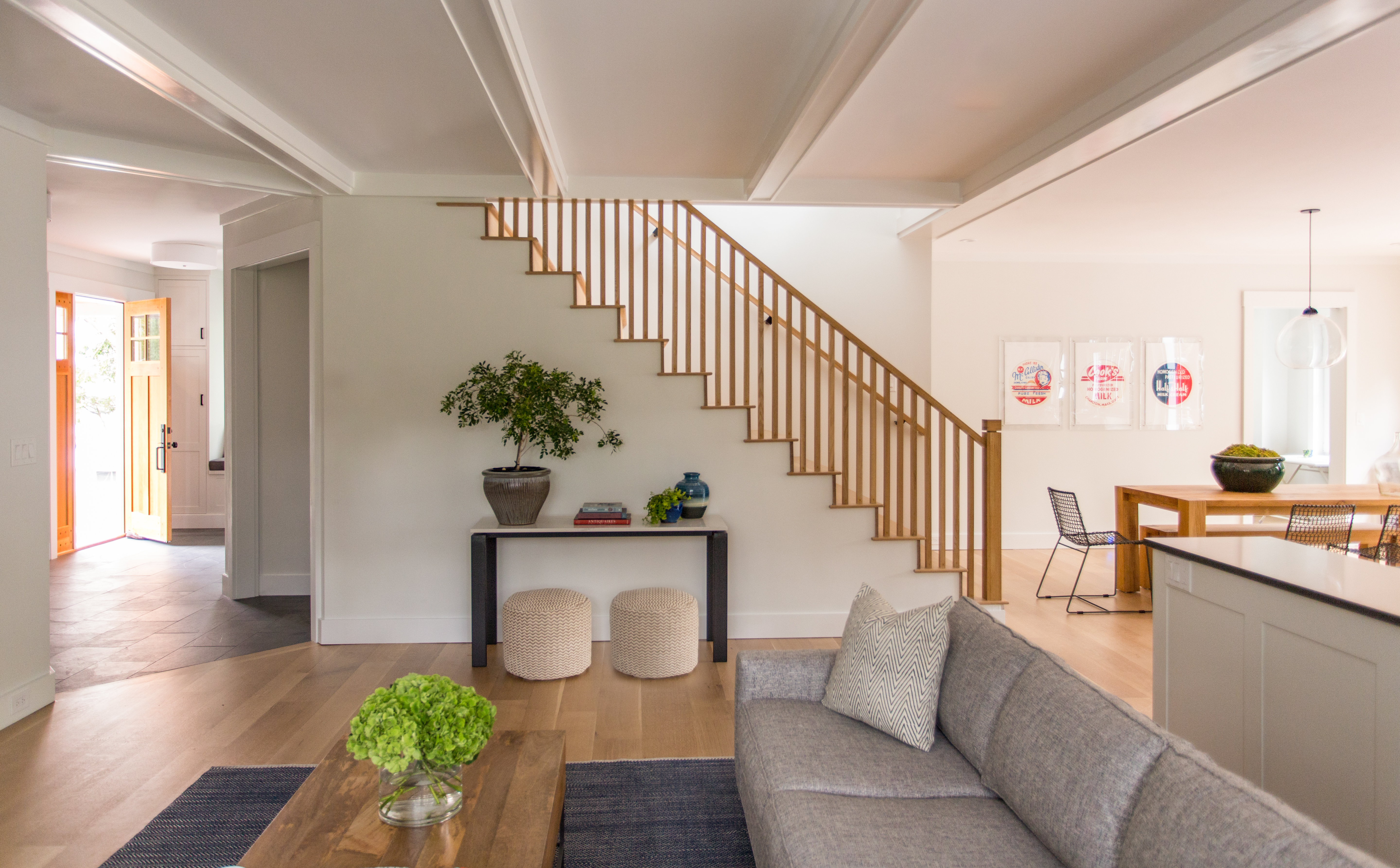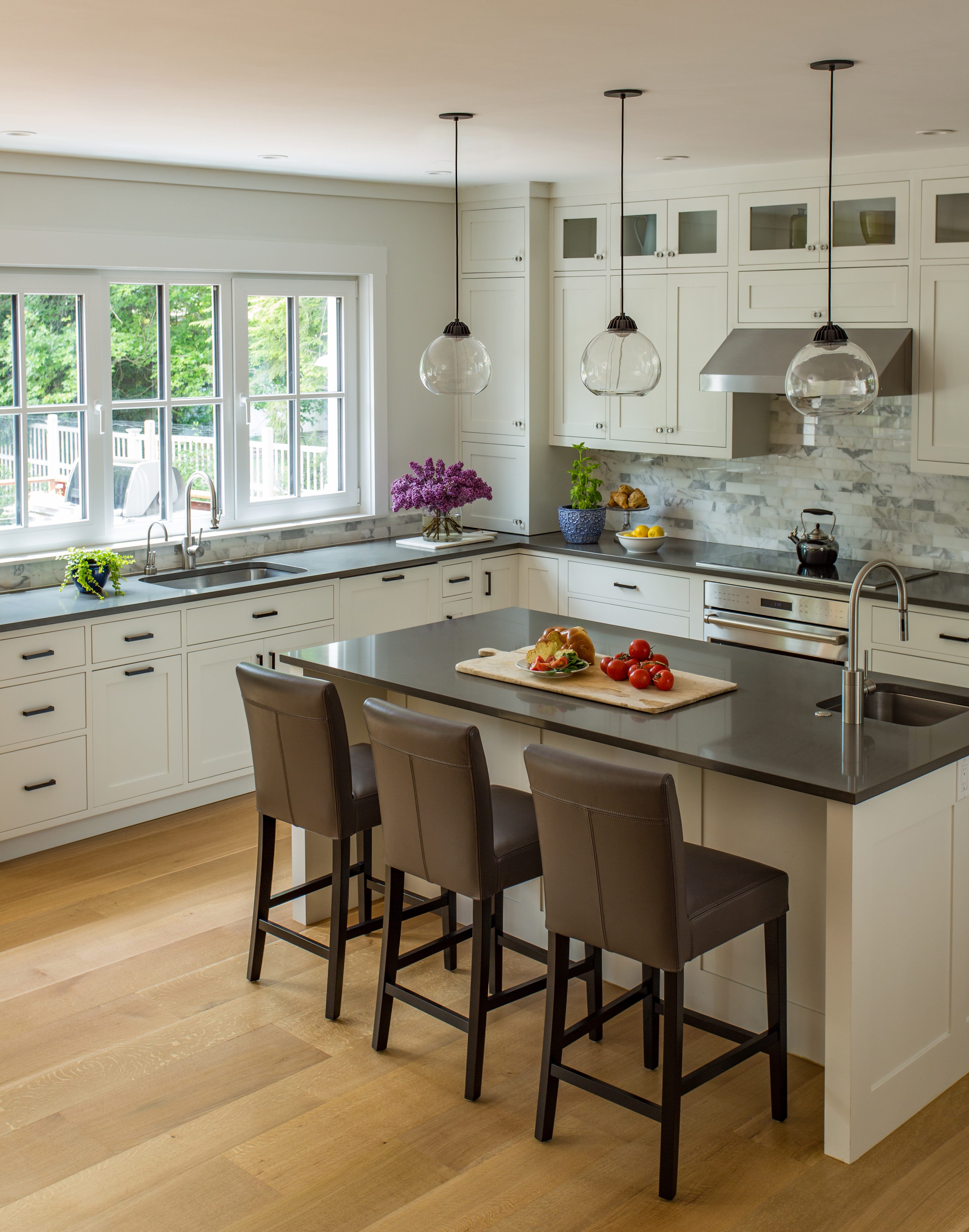
[Photo: Eric Roth]
This Massachusetts home combines comfort and beauty with energy efficiency as one of Wellesley’s most eco-friendly buildings.
When the team at ZeroEnergy Design (ZED) set out to tackle a California couple’s need for a taste of home in New England, they weren’t without challenges. But this 4,200-square-foot house is not only comfortable and convenient, it’s also LEED Platinum certified.
“The challenge was to fit an ambitious family-oriented program on a tight lot while fitting in with the local vernacular and introducing a hint of modern at the back of the property,” says Stephanie Horowitz, ZED’s managing director. “We also wanted to fit a two-car garage without the doors facing the street, which was a challenge with the lot width.”

[Photo: Eric Roth]
The couple wanted a home that was energy-efficient and easy to clean, and ZED chose solid surface flooring throughout for just that purpose. Durable materials, finishes, cabinetry, and casework throughout the house have low or no VOCs. The team also designed a mechanical system with ventilation to provide constant fresh outdoor air.
The house in Wellesley—roughly 16 miles from Boston—is easily one of the most energy-efficient houses in the area. The design blends in seamlessly with the neighborhood around it while not skimping on green features, including an impressive solar array that faces the backyard. The house incorporates many of the top building enclosure strategies—continuous insulation, an airtight envelope, and triple-pane high-performance windows—combined with an efficient HVAC system.

[Photo: Eric Roth]
Horowitz says airtightness is key, nearly eliminating infiltration, a cause of energy loss, while significantly reducing the moisture that flows across the wall, ensuring a durable and long lasting assembly. “We test the air barrier at various points during construction and observe its progression to help ensure a successful execution. This home tested at 0.65 ACH 50, measured with a blower door test,” she says. “For reference, the stretch energy code in Massachusetts requires 3.0 ACH 50 and the Passive House standard is 0.6 ACH 50. This home is extremely airtight.”
In the event of a winter power outage, the house would very slowly lose heat, thanks to its envelope. The ZED team says it would take multiple days to drop to 60 degrees, even with no heat source. The house’s drainage system would help to keep the finished basement dry, and a generator would keep the all-electric house fully functional. While the homeowners have not, fortunately, had to deal with a power outage since living there, Horowitz says they’ve been particularly impressed by how little heat is required to keep the house warm in winter.

[Photo: Eric Roth]
Other efficient systems within the house include an air source heat pump for heating and cooling, a heat pump hot water heater, LED lighting, energy recovery ventilation, and, of course, high efficiency appliances.
But Horowitz says her favorite feature of the house is the roof deck off of the master suite—a wonderfully private escape for the homeowners, with large raised garden planters and a stellar view looking out over
the property.
But Horowitz says her favorite feature of the house is the roof deck off of the master suite—a wonderfully private escape for the homeowners, with large raised garden planters and a stellar view looking out over the property.
Horowitz hopes to see more projects like the Wellesley one, with similar energy performance, thermal comfort, and indoor air quality. “Incorporating building enclosure strategies on a new custom home is really a no-brainer,” she says. “It’s a small percentage of the overall cost, it’s more costly to retrofit in the future, and provides the benefit of low energy use, unsurpassed thermal comfort, and a resilient wall assembly.”
ZED’s strategies also allow them to use all electric heating, cooling, and ventilation systems, even in New England. While building code is slowly moving in this direction, requiring less and less energy to operate houses, Horowitz hopes homeowners like this Massachussetts couple—clients who keep her motivated and excited about the future of green building—continue to step up and fill in the gap.
PROJECT
- LOCATION: Wellesley, Massachusetts
- SIZE: 4,200 square feet
- COMPLETION: Spring 2016
- CERTIFCATION: LEED Platinum
TEAM
- Architect & Mechanical Designer: ZeroEnergy Design
- Contractor: Bevilacqua Builders Inc.
- Civil Engineering: Creative Land & Water Engineering
- Landscape Design: Barbara Peterson
- Interior Furnishings: Nest & Company

